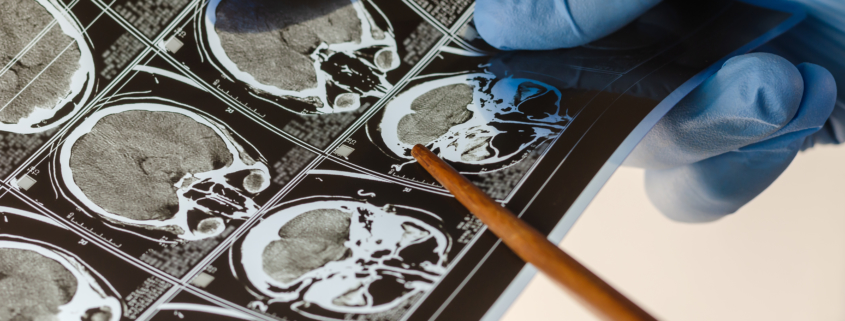Talk and die syndrome is a term used to describe the phenomenon when someone sustains what seems to be a minor head injury, appears to be fine, and then suddenly dies.
Usually, it starts with someone hitting their head, and then they will seem to be doing alright and be up and talking. Then without warning, they slip into unconsciousness and die.
This is an uncommon response to head trauma. In common cases, the person’s level of alertness, ability to talk, walk around, etc. is indicative of the severity of their head wound. So, if they are talking and seem fine, they will probably be okay, versus if they are unresponsive, they may have a more serious head injury.
This is not the case with talk and die syndrome – patients may seem completely fine and choose to skip going to the doctor, but they could be unconscious and then dead in a matter of hours.
Causes of Talk and Die Syndrome
What causes talk and die syndrome? It’s usually caused by a very specific type of head trauma. The temporal bone is a part of the skull right in front of the ear. It’s thin and easy to fracture, which can cause problems because there is an artery beneath the bone.
The middle meningeal artery serves to transport blood to the scalp, not the brain. However, if this artery is damaged, the blood can flood the inside of the skull and soak the membrane around the brain. This hemorrhaging can ultimately compress the brain, causing death.
Until that last step, there is no brain damage, so the person will likely be acting normal and seem okay. But once the brain is compressed, things will go south quickly, and they will become unconscious and then die.
This head wound is known as an epidural hematoma.
Talk and Die Syndrome Risk Factors
Talk and die syndrome can happen in a variety of settings and happens regularly across different types of head trauma such as sports-related head injuries, assaults, and car accidents.
However, you are at higher risk if you regularly participate in athletic activities such as climbing, cycling, football, skiing, or hockey, as those activities come with a higher risk of head trauma. Children under 14 are more likely to get head injuries on average, while adults over 75 are more likely to die from head injuries.
Natasha Richardson: An Infamous Example of Talk and Die Syndrome
In 2009, everyone was talking about talk and die syndrome when Natasha Richardson passed away suddenly. The British Tony award-winning actress who was married to Liam Neeson and was known for playing the mother in The Parent Trap (1998) was taking skiing lessons in Montreal, Canada when she fell.
The fall did not seem serious as Richardson did not show any signs of injury, was talking and walking, and refused medical attention because she felt fine. Rather than go in the ambulance they called for her, she instead returned to her hotel room.
One hour later, Natasha had a severe headache and was rushed to the hospital. The bleeding in her head essentially suffocated her brain and she was left braindead. She was eventually taken off of life support when there was nothing more the doctors could do and was soon pronounced dead.
Her loved ones and fans around the world were left heartbroken and shocked that she could have gone from feeling fine to passing away after what was just a little fall. Tragically, Natasha suffered from talk and die syndrome, presumably damaging the middle meningeal artery when she hit her head falling down on the ski slopes.
Always Visit the Doctor After Being in an Accident, Even if You Don’t Feel That Bad
If you hit your head in an accident, you should always go to the doctor, even if you feel okay.
Serious head injuries can go unnoticed and have no symptoms at first, but if left untreated, they can result in severe, irreversible brain damage or death. Until the blood soaks the membrane and compresses the brain, there is no damage to the brain, which means that if the doctors have time to drain the blood from their skull, the person could live and have no brain damage.
Talk and die syndrome is preventable with swift and immediate medical attention, which is an example of why you should always go to the doctor even if you feel fine. It could save your life.
Were you or a loved one in a car accident? Call us now.
If you or a loved one was in a car accident, we can help. At Lytal, Reiter, Smith, Ivey & Fronrath, we help our clients get justice and maximum compensation after their injuries. Our Florida traumatic brain injury attorneys are experienced and prepared to take on your case and make sure you have access to the best care and resources in the wake of your injury.
If you were injured as a result of someone else’s negligence, you should not be left with the crushing financial weight of expensive medical bills. With our attorneys on your side, you can focus on the most important thing after being injured: getting better.
Call Lytal, Reiter, Smith, Ivey & Fronrath today at (561) 655-1990 to schedule your free initial case consultation.




